

<< Go Back up to Region ‘Los Angeles: Hollywood’
| Follow Mike Hume’s Historic Theatre Photography: |  |
 |
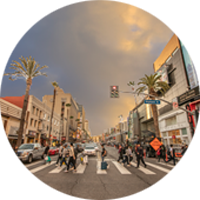
Added to the National Register of Historic Places: 4th April 1985
Website: hollywoodpartnership.com 
Address: Hollywood Boulevard, Los Angeles, CA 90028 
The Hollywood Boulevard Commercial and Entertainment District was listed on the National Register of Historic Places in 1985 to recognize the historical significance of over 100 entertainment, commercial, and retail buildings located in Hollywood’s commercial core.
 Detailed Information
Detailed InformationThe historic district stretches roughly 12 blocks along Hollywood Boulevard, and contains 10 theatres.
The commercial core of Hollywood started to gain prominence in the early 1920s although its first theatre (the Hollywood Theater, now the Guinness World Records Museum  ) was actually built in 1913. The general design pattern of the area, still visible today, is high-rise buildings at major intersections flanked by one/two-story retail buildings filling in the blocks.
) was actually built in 1913. The general design pattern of the area, still visible today, is high-rise buildings at major intersections flanked by one/two-story retail buildings filling in the blocks.
The vast majority of the buildings listed in the district were built between 1915 and 1939. The district has a large number of neon signs and is notable for the Hollywood Walk of Fame  which runs for 1.3 miles (2.1 km) between the intersections of Hollywood & La Brea and Hollywood & North Gower.
which runs for 1.3 miles (2.1 km) between the intersections of Hollywood & La Brea and Hollywood & North Gower.
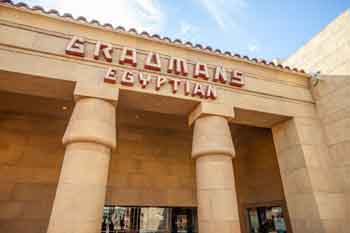
After the Hollywood Theater opened in 1913, the next theatre to open was the Holly Cinema in 1920, altered into its current French Chateauesque style in the 1930s by noted theatre architect S. Charles Lee. The old movie theatre has long since been converted to retail use.
After opening the Million Dollar Theatre in early 1918 in Downtown Los Angeles, theatrical showman Sid Grauman turned his attention to Hollywood, building the Egyptian Theatre which opened in October 1922.
At an early stage of construction the design was switched from Spanish Colonial to Egyptian Revival (note the Spanish-style roof tiles above the main entrance) which proved to be an extremely fortuitous move for Grauman given Howard Carter’s discovery of the tomb of Tutankhamun just one month after the theatre opened. The opening of the Egyptian Theatre on 18th October 1922 was also Hollywood’s first movie premiere, featuring Douglas Fairbanks’ Robin Hood  .
.
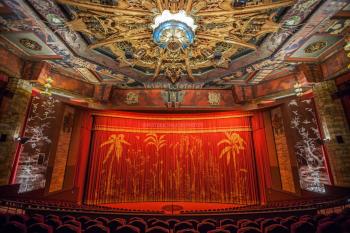
Grauman went on to build the Chinese Theatre a couple of blocks west of the Egyptian Theatre, which opened in May 1927 and has likely seen the greatest number of movie premieres of any movie theatre across the globe.
Both the Chinese and Egyptian theatres feature outdoor “courtyard lobbies”, taking advantage of outdoor open space in front of the theatre and its visibility from the street. The courtyard lobby concept helped create a buzz of excitement as passers-by saw crowds gathering for a performance or screening, however was only practical at theatres in the agreeable Southern California climate. Other theatres featuring courtyard lobbies are the Alex Theatre in Glendale, the Arlington Theatre in Santa Barbara, the Fox Fullerton, the Geffen Playhouse, the Pasadena Playhouse, and the Plaza Theatre in Palm Springs.
The opening of Grauman’s Chinese Theatre in May 1927 was preceded by a year in which four new theatres opened in Hollywood. First came the El Capitan Theatre in May 1926, the Music Box Theatre in October, then January 1927 saw both the Vine St Theatre and the Hollywood Playhouse open.
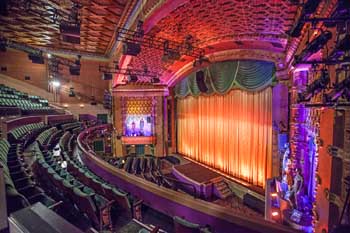
The El Capitan Theatre was built by producer and entertainer Charles Toberman, who envisaged Hollywood as a new theatrical and entertainment district for Los Angeles and who played an integral part in key developments in Hollywood area including the Roosevelt Hotel, Grauman’s Egyptian and Chinese theatres, and the Hollywood Masonic Temple (now the El Capitan Entertainment Center hosting popular late-night TV show Jimmy Kimmel Live!  ).
).
Toberman’s El Capitan Theatre was dubbed “Hollywood’s First Home of Spoken Drama” and staged legitimate productions. Over the years the theatre increasingly ran movies, and in 1941 it was rechristened as the Hollywood Paramount, dedicated to movies.
The theatre was painstakingly restored by Disney in the mid-1980s and is now their principal first-run movie theatre, often featuring movie premieres, spectacular pre-shows (prologues), organ accompaniments, and Q&A sessions.
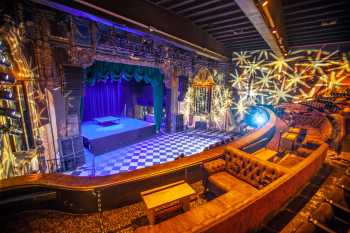
The Music Box Theatre, a mile east of the El Capitan Theatre, opened in October 1926 as a theatre dedicated to light-hearted musical comedy reviews, built by Carter DeHaven who sought to bring a “Ziegfeld flavor” to Los Angeles’ entertainment scene. The venture was not successful and within a year the theatre was focused on presenting legitimate drama.
Now called the Fonda Theatre, it continues to be a popular and vibrant live entertainment venue in the heart of Hollywood and was recently named top music venue in L.A. (number 1 out of 50) by Los Angeles music critics.
The Vine St Theatre was opened in January 1927 by the Wilkes Brothers, claimed to be Hollywood’s first Broadway-style theatre. In 1936 it became the CBS Radio Playhouse and the home of The Al Jolson Show.
In 1999 the Ricardo Montalbán Foundation  bought the building with the vision of providing inspiration and training for emerging artists in the Hispanic community and thus enabling them to mainstream into the performing arts and the broader entertainment industry. The theatre reopened in 2004 as the Ricardo Montalbán Theatre and now features a hugely-popular rooftop cinema.
bought the building with the vision of providing inspiration and training for emerging artists in the Hispanic community and thus enabling them to mainstream into the performing arts and the broader entertainment industry. The theatre reopened in 2004 as the Ricardo Montalbán Theatre and now features a hugely-popular rooftop cinema.
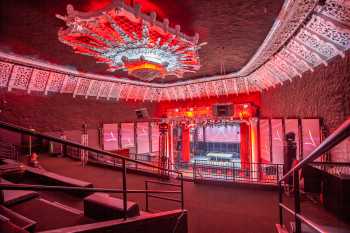
Five days after the Vine St Theatre opened, the Hollywood Playhouse opened as yet another legitimate theatre. After the Great Depression hit, the Playhouse became the WPA Federal Theatre in recognition of its participation in the Federal Theatre Project. For a few years in the 1940s the theatre took the El Capitan name, that moniker having been released at the time by the renaming of the El Capitan Theatre as the Paramount Hollywood.
In the early 1950s NBC bought the theatre and turned it into their US West Coast television theatre, with many notable broadcasts coming from the theatre including The Bob Hope Show. In the early 1960s ABC bought the theatre and made it the home of The Jerry Lewis Show. In 2002 the theatre was purchased by Hollywood Entertainment Partners as an addition to their successful “Avalon” clubs in Boston and New York. Avalon Hollywood has been going strong for nearly 20 years and continues to be at the forefront of premier live entertainment and music in Hollywood as we enter the 2020s.
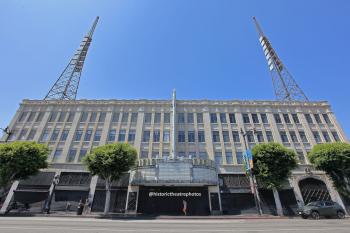
In 1928 Warner Bros were keen to make their mark on the Hollywood scene and commissioned theatre architect G. Albert Lansburgh to design the massive Warner Brothers Hollywood theatre, taking up half a city block and seating just short of 2,800. The theatre was so big it had two entrances: one on Hollywood Boulevard and the other on Wilcox Avenue. The theatre is peculiar in that it’s oriented 45 degrees to the street grid, however in this way Lansburgh could fit a large theatre into a smaller building footprint.
The lobby wraps around the Orchestra (main floor) level seating in the shape of a horseshoe. In 1978 the theatre was triplex’d (split into three separate movie theatres) and ultimately closed in 1994. From October 2000 the main auditorium was used by the Entertainment Technology Center (part of the University of Southern California, or USC) as their Digital Cinema Laboratory, and then in 2006 a church took over use of the theatre. The church’s lease was terminated in 2013 and the building has remained vacant and shuttered since then.
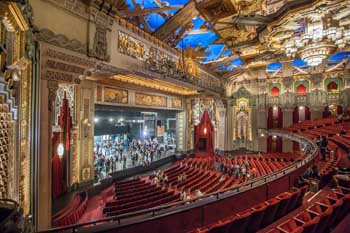
In mid-1930 the Pantages Theatre opened, claimed to be the United States’ first Art Deco theatre. It was the last theatre to be built by theatrical impresario Alexander Pantages and was designed by architect B. Marcus Priteca. A 10-story office tower was originally planned above the theatre however it was scrapped due to the effects of the Great Depression.
Initially designed as a vaudeville/movie combination theatre, the Pantages ended up showing mostly movies. The theatre was fully renovated and restored in 1999-2000 just prior to a two-year run of Disney’s “The Lion King”.
The Hollywood Pantages is now the home of Broadway in Hollywood  and as of August 2021 is home to a resident production of smash-hit musical Hamilton
and as of August 2021 is home to a resident production of smash-hit musical Hamilton  .
.
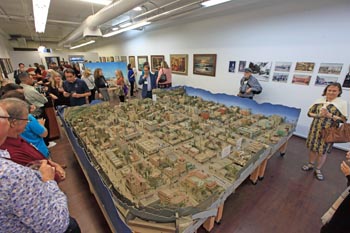
Nonprofit organization Hollywood Heritage  was formed in 1980 with the mission to preserve and protect the historic built environment of Hollywood, and is based in the Lasky DeMille Barn in Hollywood. The organization looks after the fascinating Hollywood in Miniature model, brainchild of Joe Pellkofer, owner of the Hollywood Cabinet Company, who kept his craftsmen busy during quiet periods by recreating detailed street scenes of Hollywood in the mid-1930s. The model is hosted in the DeLongpre Annex – a storefront that was donated by Robertson Properties Group, and is usually part of the Old Hollywood Walking Tour
was formed in 1980 with the mission to preserve and protect the historic built environment of Hollywood, and is based in the Lasky DeMille Barn in Hollywood. The organization looks after the fascinating Hollywood in Miniature model, brainchild of Joe Pellkofer, owner of the Hollywood Cabinet Company, who kept his craftsmen busy during quiet periods by recreating detailed street scenes of Hollywood in the mid-1930s. The model is hosted in the DeLongpre Annex – a storefront that was donated by Robertson Properties Group, and is usually part of the Old Hollywood Walking Tour  .
.
The Hollywood Partnership  is the organization that manages the Hollywood Entertainment District, a ten-year Property-Based Improvement District (PBID) that stretches along the world-famous Walk of Fame and spans historic Hollywood Boulevard, from the LaBrea Avenue Gateway on the west to the Hollywood 101 Freeway on the east. Many of Hollywood’s famous landmarks are located in the District – the epicenter of the entertainment capital of the world and birthplace of the movie industry. In 2019, The Hollywood Partnership’s Board of Directors approved a 5-year Strategic Plan entitled Hollywood in Focus which guides the organization’s work and investments.
is the organization that manages the Hollywood Entertainment District, a ten-year Property-Based Improvement District (PBID) that stretches along the world-famous Walk of Fame and spans historic Hollywood Boulevard, from the LaBrea Avenue Gateway on the west to the Hollywood 101 Freeway on the east. Many of Hollywood’s famous landmarks are located in the District – the epicenter of the entertainment capital of the world and birthplace of the movie industry. In 2019, The Hollywood Partnership’s Board of Directors approved a 5-year Strategic Plan entitled Hollywood in Focus which guides the organization’s work and investments.
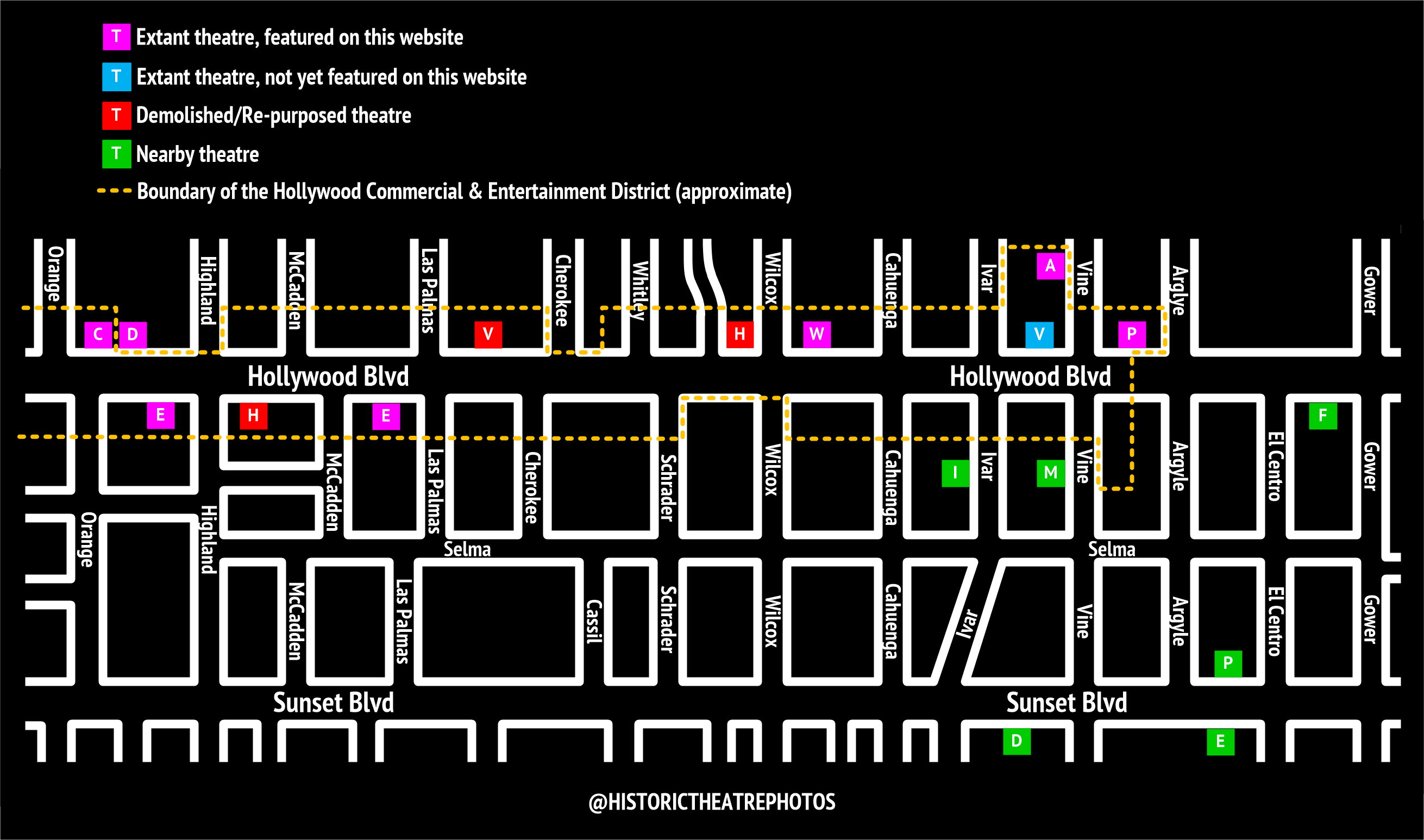
 .
. Listed/Landmark Building Status
Listed/Landmark Building Status (4th April 1985)
(4th April 1985) How do I visit the Hollywood Boulevard Entertainment District?
How do I visit the Hollywood Boulevard Entertainment District?April Clemmer’s Old Hollywood Walking Tour  will tour you around the Hollywood Boulevard Commercial and Entertainment District. Tours generally run the last Friday of every month plus additional special dates, and last approximately 90 mins. Advance reservations are requested. For more information, tour schedules, and reservations, go to the Old Hollywood Walking Tour website
will tour you around the Hollywood Boulevard Commercial and Entertainment District. Tours generally run the last Friday of every month plus additional special dates, and last approximately 90 mins. Advance reservations are requested. For more information, tour schedules, and reservations, go to the Old Hollywood Walking Tour website  .
.
 Photos of the Hollywood Boulevard Entertainment District
Photos of the Hollywood Boulevard Entertainment DistrictPhotographs copyright © 2002-2026 Mike Hume / Historic Theatre Photos unless otherwise noted.
Text copyright © 2017-2026 Mike Hume / Historic Theatre Photos.
For photograph licensing and/or re-use contact us here  . See our Sharing Guidelines here
. See our Sharing Guidelines here  .
.
| Follow Mike Hume’s Historic Theatre Photography: |  |
 |